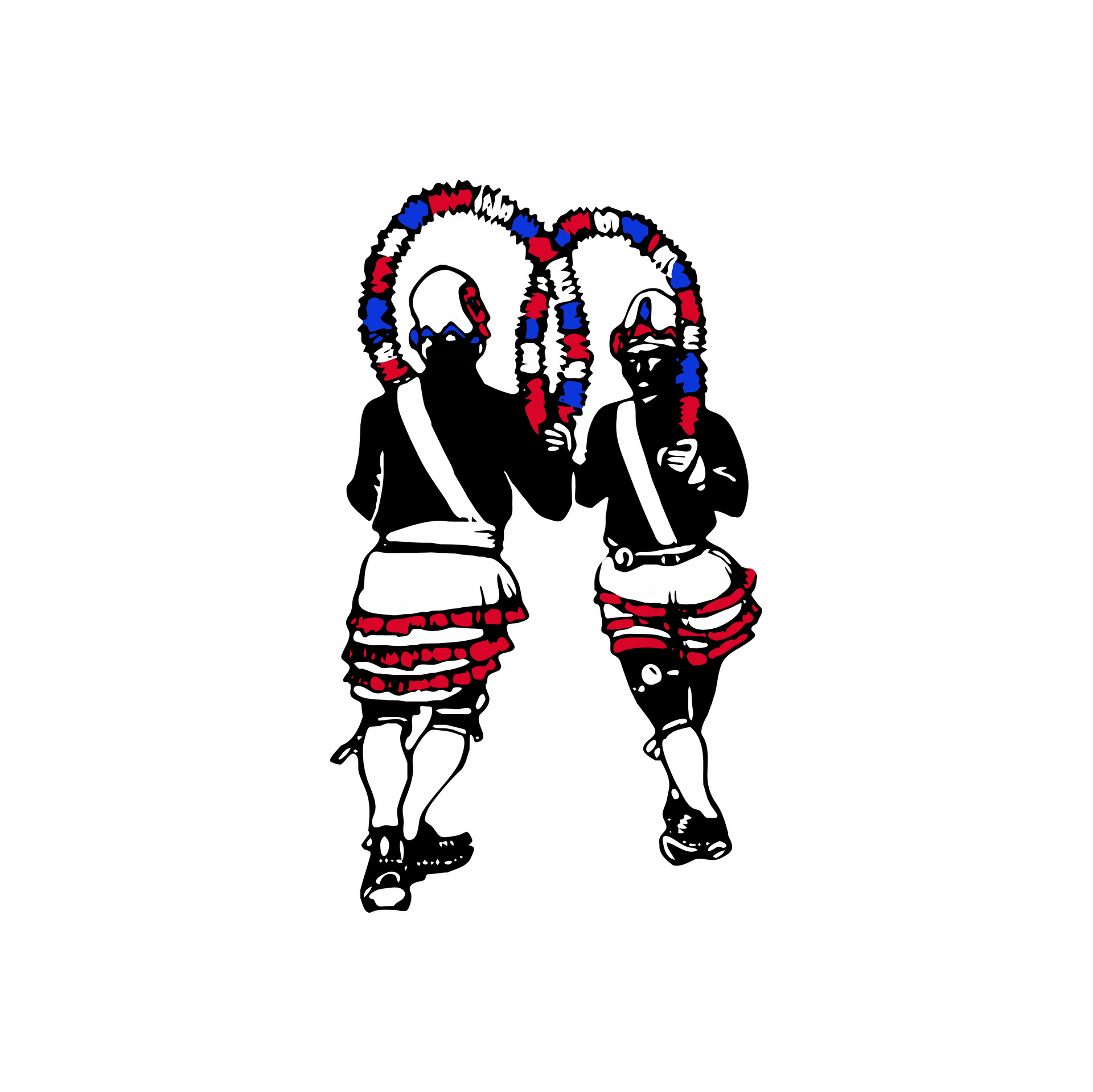History
- Overview
Without doubt the, “Britannia Coconut Dancers” in Lancashire present an extraordinary, eccentric, exotic and unique spectacle once a year every Easter Saturday in Bacup. For over a century, astonished visitors have marvelled at the distinctive and precise movements of the dances and they have achieved a status unique in folk and traditional dance circles; although frequently associated with English Morris dance there is nothing that compares. The history of the dance does raise as many questions as there are answers. Similarly, over the years instead of just marvelling at the dances, all too often ‘knowledgeable’ outsiders conjure up elaborate, fanciful and plausible suggestions: a fertility rite, pre-Christian or Pagan ceremony to welcome in the spring.
Our history is one based on “oral testimony” handed down over one hundred and fifty years. A popular story is firmly held that the dance and the costume were brought to Rossendale Valley by Cornish tin-miners after their industry depleted. The Cornish miners took their skills to many parts the world and came to the nearby Whitworth quarries. Mining stone and coal at the turn of the nineteenth century was the largest industry in this part of Lancashire with over 3000 men and boys involved at its peak. The migrating tin miners who settled in the area are thought to have taught the dances in Rawtenstall and Whitworth including an original Tunstead mill group.
There were also other teams of coconut and garland dancers prevalent in Lancashire in the 19th Century; Whitworth, Shawclough, Cloughfold, Waterfoot, Lee-mill, to name but a few, the “Britannia Team” formed in the village of “Britannia”are the surviving team.
We do know that in 1857, William Hargreaves created a “Tunstead Mill” carnival dance troupe and the dancers delighted thousands of people annually at Easter week by their dancing in the street. A two-day tour on Good Friday and Easter Saturday often travelled as far as Rochdale and Crawshawbooth. Inevitably, objections from church-goers led to stopping the Friday perambulations.
The “Tunstead Mill” dancers ceased and the tradition was taken up by
the Britannia men.
The early references to “Moorish Pirate Dance” recorded by one-time leader Arthur Bracewell in 1948 has frequently been seen as just a fanciful description by the creators of the dance but recently found correspondence from these originators reveal a surprising knowledge of “Cornish History”. An element of English history untaught at school it seems, but familiar to these individuals… reference to “Moorish” marauders who, for centuries searched the Cornish coastline and seized people as slaves. Descriptions of the kilts and turbans all relate to the Moorish Pirates and their “Dance of Mad Revelry” which certainly sums up the extravagant activity of our dancers.
- The Costume
Said to represent a Moorish Pirate; the hat is of a turban style, white & trimmed with either red or blue ribbon alongside blue feathers and a rosette; the black polo neck woollen jumper worn above black velvet knee breeches is finished with white knee length socks and the footwear - originally said to be soft pirates moccasins - is replaced with traditional iron-shod Lancashire clogs, the footwear of the original Lancashire miners, finally ,each dancer has a set of “five nuts” similar to castanets and a white kilt with three horizontal red stripes completes the curious costume.
Today’s costume and guising conform to the early description of the dancers attire although the ‘burnt cork’ for anonymity has been replaced with stage make-up - more accessible and sensible!
- The Nut and Garland Dances
The dances are unique and are as enigmatic to the team as they are to a casual audiences and aficionados.
There are two nut dances: ‘Thowd Crash’ and ‘Figures’ these have the 8 male dancers carrying a set of 5 ‘coconuts’ - comparable to wooden castanets. - attached to hands, knees and waist. These are tapped together in a very precise pattern creating a rhythmical percussive accompaniment to the dance. A conspicuous, but non-dancing character in full costume known as a ‘whiffler’ accompanies the dancers with a long whip to keep control!
There are five Garland dances, where the performers hold a garland, covered in red, white & blue rosettes, held in both hands these are used weaving in and out the dances in an intricate and complicated formation.
- The Music
On Easter Saturday, the troupe are joined by the Stacksteads Band who play continuously in support over a route of some seven miles, dedicated, professional and sharing the dancers endurance. Throughout the year at all rehearsals and at many booked events we are accompanied our traditional concertina players who are also dedicated to the dancers tradition and its music.
“It’s not pretty and it’s not clever. It is, simply, awe-inspiringly, astonishingly other. Morris men from southern troupes come and watch in slack-jawed silence. Nothing in the civilised world is quite as elementally bizarre and awkwardly compelling as the Coco-nutters of Bacup.”
AA Gill meets the Morris dancers", The Sunday Times, August 9, 2009
- Summary
Through the century we have danced, been applauded, worked extremely hard in performances and collecting for charity - proud to not only represent our local area but “England” itself. Until recently, we have regularly performed exhibition dances for the English Folk Dance & Song Society and The Morris Ring of Great Britain and our team has a proud history of appearances at The Royal Albert Hall London, a number of times performing in front of Royalty; prize winners at The Welsh Eisteddfod; we have danced in Germany, Belgium, Holland, Ireland and Spain and won many prizes at carnivals and fetes in the UK. Additionally, the team has appeared on many TV shows and documentaries, and featured in many newspapers, supplements and gazettes.
We are proud of our team and its long heritage, its unique place in the “Folk World” and the immense pleasure and vibrancy that we bring to outdoor theatre in an ever-changing World !
